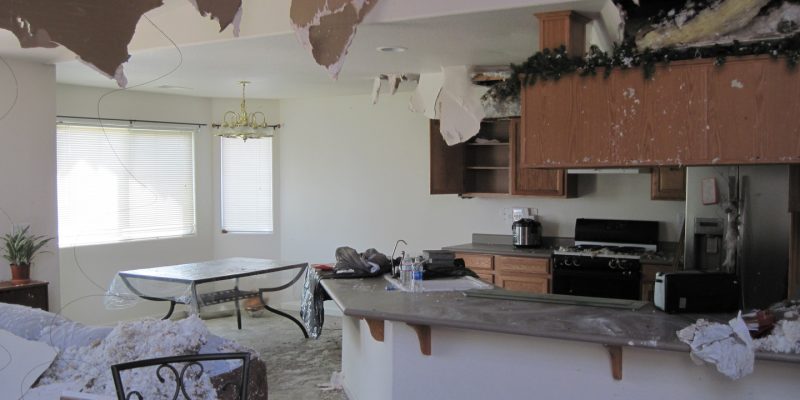Do's and also Don'ts Throughout Water Damage Emergency Situations.
Do's and also Don'ts Throughout Water Damage Emergency Situations.
Blog Article
Everybody is bound to have their own conception involving Reducing Your Risk Of Water And Fire Damage At Home.

Water provides life, water breach on components where it's not supposed to be can result in damages. Homes with water damages odor moldy and also old.
Water can come from lots of resources such as typhoons, floods, burst pipelines, leaks, and also drain problems. In case you experience water damage, it would certainly be good to understand some safety and security preventative measures. Below are a few guidelines on how to handle water damages.
Do Prioritize House Insurance Coverage
Water damage from flood because of heavy winds is seasonal. Nonetheless, you can likewise experience a sudden flooding when a malfunctioning pipe suddenly bursts right into your house. It would certainly be best to have residence insurance policy that covers both acts of God such as natural tragedies, as well as emergency situations like broken plumbing.
Do Not Forget to Turn Off Energies
In case of a catastrophe, particularly if you live in a flood-prone location, it would be suggested to shut off the major electrical circuit. This cuts off power to your whole house, avoiding electrical shocks when water comes in as it is a conductor. In addition, do not forget to switch off the main water line valve. Furniture will certainly move around and also cause damages when floodwaters are high. Having the main valve shut down protects against additional damage.
Do Stay Proactive as well as Heed Weather Condition Signals
Tornado floods can be very uncertain. If there is a history of flooding in your area, stay aggressive as well as ready. Listen to emptying cautions if you live near a river, lake, or creek . Obtain valuables from the first stage and cellar, then placed them on the highest possible level. Doing so lowers prospective property damage.
Don't Ignore the Roof
You can avoid rainfall damage if there are no holes and leakages in your roof covering. This will certainly protect against water from flowing down your walls and also saturating your ceiling.
Do Pay Attention to Small Leakages
A burst pipe doesn't happen over night. Typically, there are warnings that suggest you have deteriorated pipes in your house. For instance, you might see gurgling paint, peeling wallpaper, water streaks, water spots, or dripping sounds behind the walls. At some point, this pipeline will certainly break. Preferably, you should not wait on points to intensify. Have your plumbing repaired prior to it results in substantial damages.
Do Not Panic in Case of a Ruptured Pipe
When it comes to water damage, timing is vital. Hence, if a pipeline ruptureds in your home, right away closed off your major water shutoff to reduce off the resource. Call a reliable water damage repair specialist for assistance.
Water provides life, water intrusion on components where it's not supposed to be can result in damage. Residences with water damages odor old and also stuffy.
Water damage from flooding fees to heavy winds is seasonal. You might observe bubbling paint, peeling off wallpaper, water touches, water spots, or trickling audios behind the walls. When it comes to water damage, timing is vital.
Are Water Mitigation and Water Damage Restoration the Same Thing?
When are Water Mitigation Services Needed?
Water intrusion can come from small sources like a dishwasher leak or larger ones like rainwater causing inches of standing water in a basement. Other instances of damage that call for water mitigation services include:
Sewer backup, sump pump failure, or clogged toilets Toilet wax seal failure Shower pan corrosion Pipe leaks and ruptures Washer or icemaker line breaks HVAC drain line blockage A leaking roof Moisture behind walls Foundation cracks Mold Mold is a good example to illustrate how water mitigation works. We’ve often found that clients we do mold remediation services for had existing water damage issues that ended up leading to the mold damage. When performing water mitigation we look for what’s causing the water problem and for ways to stop mold before it multiplies and becomes a bigger concern.
Are You Currently Experiencing a Water Disaster?
If you’re in the middle of a water intrusion disaster, here are some important dos and don’ts to follow:
Don’ts:
Safety first! Do not enter a room with standing water until the electricity has been turned off! A regular household vacuum should never be used to pick up water. Never use electrical appliance if standing on a wet floor or carpet. Leave visible mold alone. Dos:
Call a water mitigation professional as soon as possible. Mold and other damage can begin within hours of a water intrusion. Mop and blot up as much water as possible. Remove non-attached floor coverings and mats but leave wall-to-wall carpeting removal to a pro. If there are window coverings like draperies that touch the water, loop them through a hanger and put them up on the rod. Remove wet cushions to dry and wipe down soaked furniture. Move valuables like paintings, photos, and art objects to a dry location. Books should be left tightly packed on shelves until it’s determined if they need specialized drying. Prop open closets, cabinets, and drawers to allow them to air out. https://cfrsfl.com/blog/are-water-mitigation-and-water-damage-restoration-the-same-thing/

I was brought to that article about How To Prevent Fire And Water From Ruining Your Holiday Season through an associate on another website. For those who enjoyed our blog post if you please remember to pass it around. I treasure reading our article about 5 Home Safety Tips To Reduce The Risk Of Fire And Water Damage.
Report this page